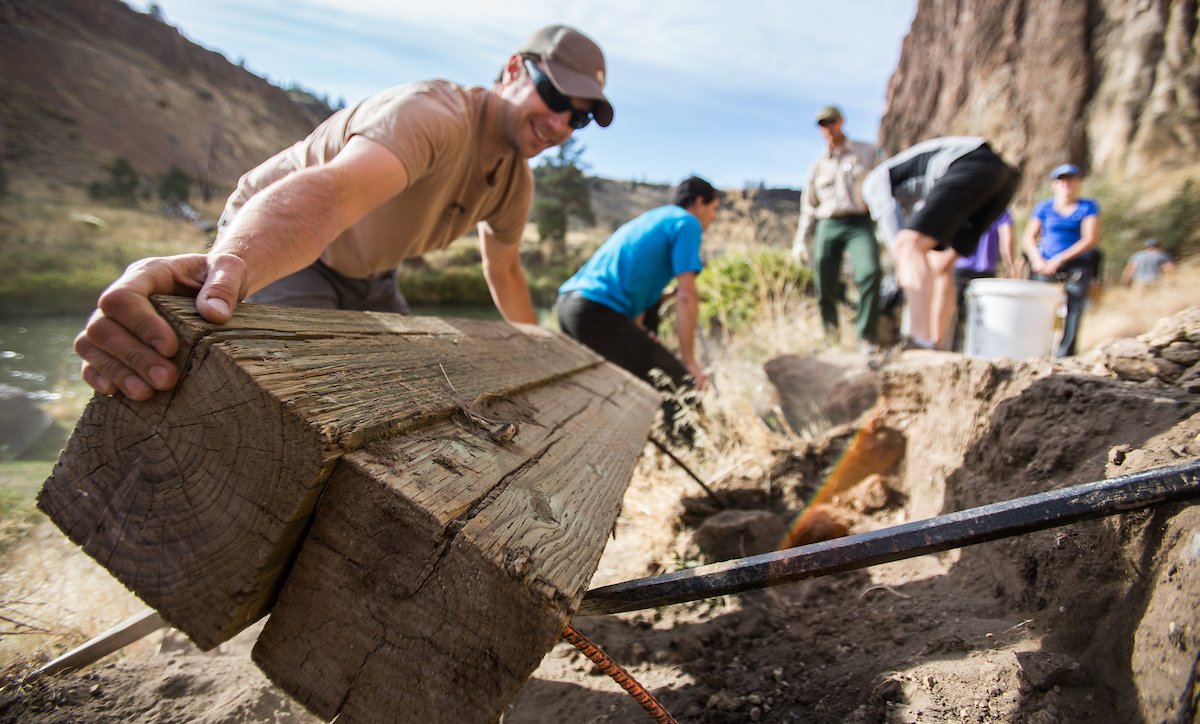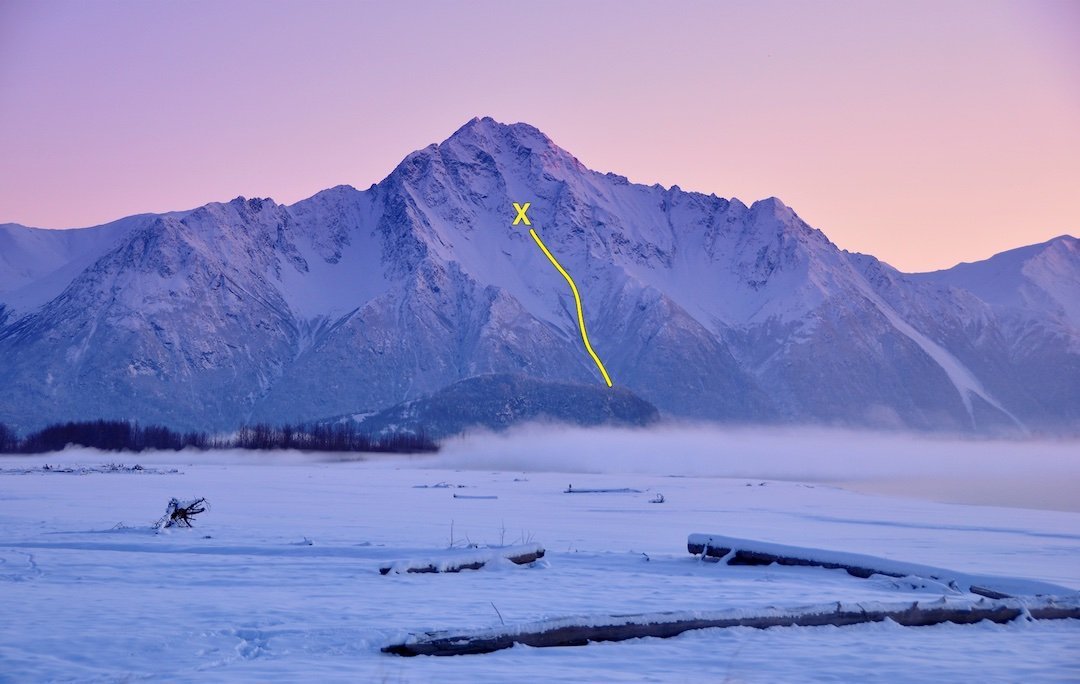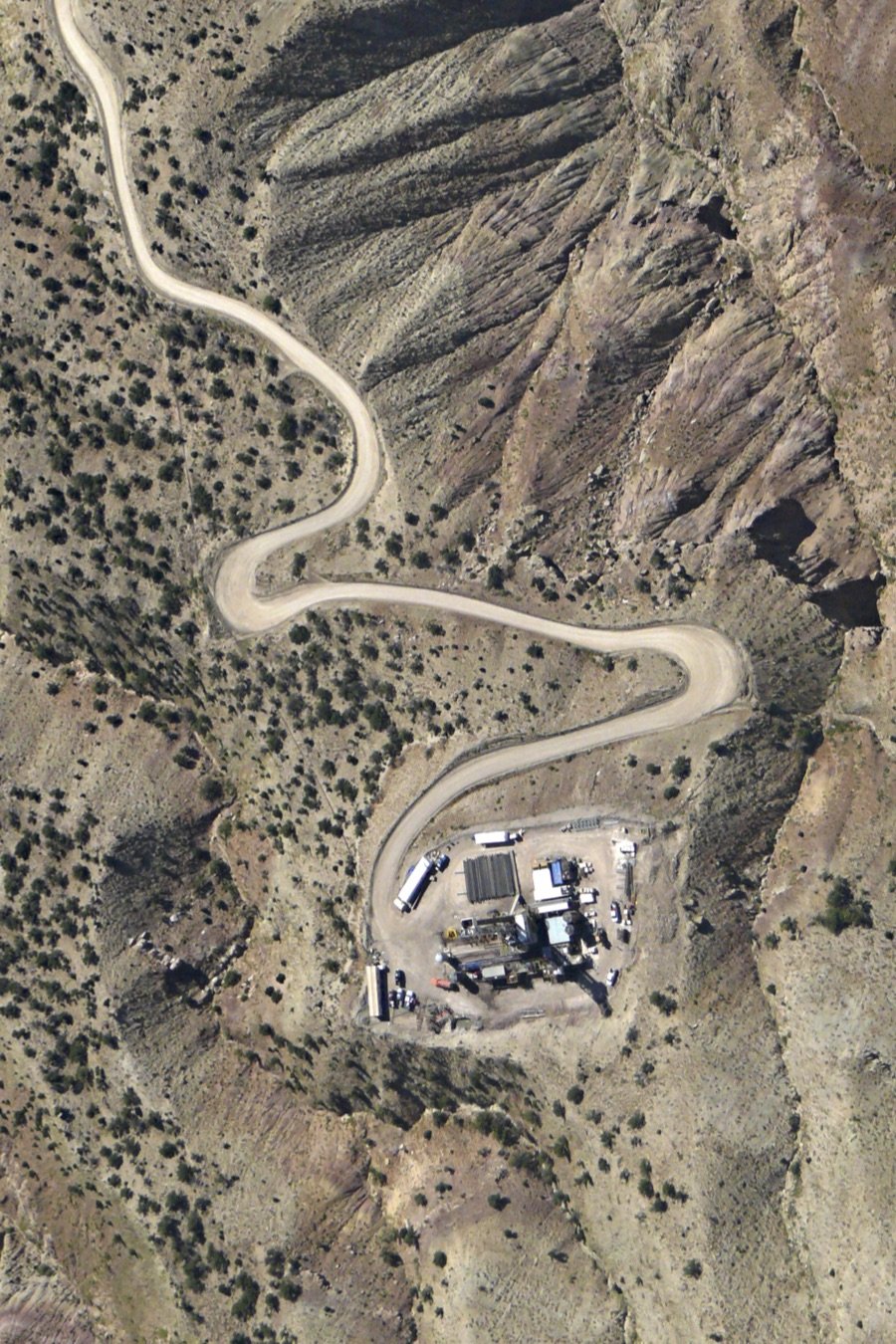by Lauren DeLaunay Miller
photos by the Ellie Hawkins and Molly Higgins collections
Ellie Hawkins during an early ascent of the North America Wall, 1973, Yosemite National Park, CA. Land of the Central Sierra Miwok people. Keith Nannery.
To steal from author John Green, I fell in love with rock climbing the way you fall asleep: slowly, and then all at once. I was an indoorsy undergraduate at the University of North Carolina when I fell face-first into the world of climbing, thanks in large part to a picture in a magazine. My love for climbing has always been attached to an obsession with Yosemite, that ultimate proving ground of American rock climbers, but before I could make my way out there myself, I tried as hard as I could to connect with that world while still confined to the walls of libraries in Chapel Hill. Climbing literature was my portal, but it didn’t take long to exhaust my options. I don’t know if I could have articulated to you then why—or even that I was—searching for books written by women, but what I did know was that I was going to learn as much as I could about my heroes and try as best as I could to follow in their footsteps.
Five years after graduating, I moved into my new home in the back of Camp 4. The Yosemite Search & Rescue site has a mystical, magical air. To walk into the site is to, quite literally, walk in the footsteps of giants. I’ve climbed at a lot of American climbing destinations, from the New and Red River Gorges in the East, to Indian Creek, Joshua Tree, Red Rock Canyon, and Rocky Mountain National Park, but nowhere have I found the lore as strong as in Yosemite.
At my now-local crag, we often refer to routes as “that 10b arete” or “the 5.11 crack to the left of the 12a.” But in Yosemite, routes have names. Astroman, the Central Pillar of Frenzy, Steck-Salathé, The Nose! We know their first ascensionists, and we know their stories. And these stories get passed down, sometimes in writing but often at campfires and dinner parties, fueled by whiskey or coffee or both. So while it didn’t take long for me to realize that there was a gap between the women’s stories I was hearing and those I was reading, it did take me a few years to muster up the courage to try to close that gap myself.
The idea for the book lived quietly in my head, but as it became louder and louder, I started to shyly share it with my climbing partners. “Don’t you think it would be cool,” I’d mutter, “if there were a whole book about women climbing in Yosemite?” The more I shared my vision, the more it grew. I started scanning old climbing magazines, making lists of the women I’d need to include. Friends started sending me articles they came across, screenshots of Supertopo forums and Mountain Project threads. I spent days at the new Yosemite Climbing Association museum in Mariposa going through thousands of pages of old magazines. At first, everything was centered on building “the list,” my dream list of contributors, and eventually I thought it might just be enough to submit as a book proposal.
Ellie Hawkins gets prepped for the void on the first ascent of Dyslexia (VI 5.10d A4), completed solo, 1985. Bruce Hawkins
I’ve always been the type of person who gets stuck on an idea and can’t shake it until I’ve seen it through. When I started climbing, I gave myself five years to climb El Cap, even though at the time I barely knew how to belay. Nearly every decision I made from that moment propelled me toward my goal, and I recognized the same level of obsession once I became hooked on the idea for this book. I made my proposal and sent it off to three publishing companies. I was living in a tent cabin in Camp 4 by then, and while my own world was consumed by Yosemite, I didn’t know if my idea would resonate outside of my community. But my first conversation with Emily White at Mountaineers Books soothed my concerns, and I knew my project would be safe under her supervision. I signed on the dotted line; I had just over a year to make this thing happen.
I started with the people I knew or could get personal introductions to. I met with Babsi Zangerl in her campervan in the Valley, and she was eager to be a part of the book. That was the moment I thought that I might actually be able to pull this off. Soon, Liz Robbins called, thanks to some coaxing by Ken Yager at the Yosemite Climbing Association. I drew on all the connections I’d made through my climbing career, and every response gave me a jolt of electricity. Fourteen months later, I turned in everything I had: 38 stories, totaling over 76,000 words.
Molly Higgins leading to The Nose’s famous feature, the Great Roof. AAC member Barb Eastman
When Molly Higgins mentioned to Lauren that she had some old boxes of slides from her time in Yosemite, Lauren knew she had to see them. Prepared to see some faded, blurry images at best, she unearthed dozens of boxes—slide after slide of perfectly preserved photographs documenting some of the most courageous ascents of a generation, including images from the first all-female ascent of The Nose on El Cap in 1977. With the tremendous help of the AAC Library, Lauren organized Molly’s collection into an online exhibit which can be viewed at here.
Ellie Hawkins—the other photo contributer for this piece—might not be a household name in the world of Yosemite climbing, but she certainly should be. She’s the only woman to ever establish a Yosemite big wall first ascent completely solo, with Dyslexia (VI 5.10d A4) in the Ribbon Falls Amphitheater. The route was aptly named. Ellie battled a terrible case of dyslexia that often complicated her climbing. Despite these challenges, an early ascent of El Cap’s North America Wall (5.8 C3) and a solo of Never Never Land (5.10a) earned Ellie’s place among the Valley’s legends. Lauren was able to digitize and preserve Ellie’s collection of slides and prints as well, a few of which are featured here.
One of the greatest gifts of working on this book came in the form of a few phone conversations with Liz Robbins. Liz is the author of one of my favorite pieces in the book, a story written years ago for Alpinist magazine that tells of her experience establishing the first ascent of The Nutcracker Suite (5.8), the first route in Yosemite to be climbed entirely on clean protection. The Nutcracker, as it is commonly known today, was the first route I ever climbed in Yosemite, years before I ended up working on the Search & Rescue team. Having driven all through the night from the mountain West, across the wide open sagebrush of Nevada, up through the winding granite slabs of Tuolumne, and down, at long last, to Yosemite Valley, I woke up at dawn, claimed my spot in Camp 4, and went straight to the Manure Pile Buttress. I once read that a “classic” climb must be at least one, if not all, of these three things: aesthetically pleasing, historically significant, and full of spectacular climbing. The Nutcracker Suite has it all, and it made for an unforgettable first Yosemite experience.
Ellie Hawkins on a solo ascent of Never Never Land (5.10a), Yosemite Valley National Park, CA. Land of the Central Sierra Miwok people. Bruce Hawkins
It’s been more than five years since that first Valley climb, and when I told Liz about my experience climbing it, we realized that because of her and Royal’s decision not to place pitons, the route climbs just about the same way today as it did during her first ascent. Of course, it is greasy with chalk and rubber from thousands of ascents, but it is not scarred the way other Yosemite routes are. Where I smeared, Liz had smeared, and where I stuffed my fingers in the crack, so had she.
Barb Eastman walking out the infamous Thank God Ledge during the first all-female ascent of Half Dome’s Regular Northwest Face(5.9C1),1976. AAC member Molly Higgins
At the end of the story, Liz expresses the mental tug-of-war she often engaged in when climbing. Her doubts about her abilities echoed my own insecurities about the making of this book. Who was I to engage in such an important project? But, as did Liz, I found time and time again that I’d yet to come across the problem that demanded more of me than I could give. Of course, this book is not perfect. There are holes—gaping ones—ones that jump out at me baring teeth and ones that, surely, I will see more clearly with time. But soon we will have in our hands the stories of 38 women who have, at one time or another, found themselves at the center of Yosemite climbing. We start in 1938 and run smack into the present, and it would horrify my editor if she knew that I were still adding stories the day before my first draft was due. But just as Steck & Roper implored us to think of their 50 Classic Climbs as some classic climbs and not the classic climbs, so too do these stories tell of the experiences of some women, not the women. Because there are so many more stories, so many more voices, so many more experiences worth telling and retelling. And as Liz so eloquently writes: I’ve only just begun the excavation.
Lauren DeLaunay Miller served on the Yosemite Search & Rescue team while completing her book, Valley of Giants: Stories from Women at the Heart of Yosemite Climbing (Mountaineers Books, Spring 2022), an anthology of stories that document the history of women’s climbing in Yosemite National Park. Lauren lives in Bishop, CA where she is a founding board member of the Bishop Climbers Coalition and Coordinator for the AAC’s Bishop Highball Craggin’ Classic. She is currently pursuing her master’s degree in Journalism at the University of California in Berkeley.























































